
Wolf spiders are members of the family Lycosidae, from the Ancient Greek word "λύκος" meaning "wolf". They are robust and agile hunters with excellent eyesight. They live mostly in solitude and hunt alone, and do not spin webs. Some are opportunistic hunters pouncing upon prey as they find it or even chasing it over short distances. Some wait for passing prey in or near the mouth of a burrow.

Terralonus is a genus of American jumping spiders that was first described by Wayne Paul Maddison in 1996.

Microstigmatidae is a small family of spiders with about 25 described species in eight genera. They are small ground-dwelling and free-living spiders that make little use of silk.

Diaea is a genus of crab spiders first described by Tamerlan Thorell in 1869. Most species are found in specific locations except for D. livens, which occurs both in the United States and D. dorsata, which has a palearctic distribution. Adults are 5 millimetres (0.20 in) to 7 millimetres (0.28 in) and tend to hide in and around vegetation, especially flowers, where their color allows them to blend in to their surroundings.

Hogna is a genus of wolf spiders with more than 200 described species. It is found on all continents except Antarctica.
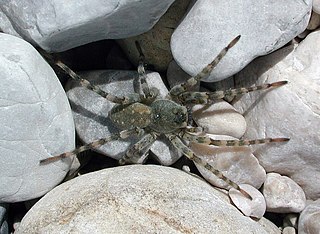
Arctosa is a genus of wolf spiders first described by Carl Ludwig Koch in 1847. As of February 2019 it contains 169 species.

Pardosa is a large genus of wolf spiders, with more than 500 described species that are found in all regions of the world.
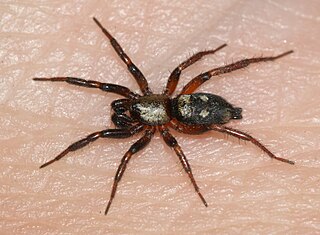
Callilepis is a genus of ground spiders first described by Niklas Westring in 1874. Some are found from Mexico to Canada, others from Europe to India. They are most commonly found in dry areas, sandy roads and beaches.

Nesticus is a genus of American and Eurasian scaffold web spiders first described by Tamerlan Thorell in 1869.
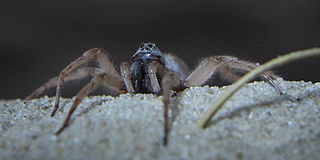
Allocosa is a spider genus of the wolf spider family, Lycosidae. The 130 or more recognized species are spread worldwide.

Pirata is a genus of wolf spiders, commonly known as pirate wolf spiders.

Trochosa is a large wolf spider genus found worldwide.
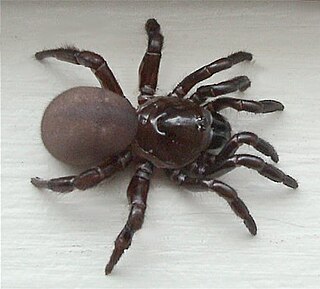
Ummidia is a genus of mygalomorph spiders in the family Halonoproctidae, and was first described by Tamerlan Thorell in 1875.
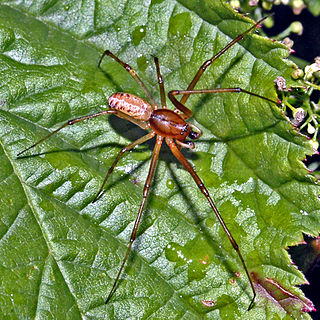
Linyphia is a genus of dwarf spiders that was first described by Pierre André Latreille in 1804. The name is Greek, and means "thread-weaver" or "linen maker".

Micaria is a genus of ground spiders that was first described by Niklas Westring in 1851. They are 1.3 to 6.5 millimetres long.

Elaver is a genus of sac spiders first described by Octavius Pickard-Cambridge in 1898.

Emblyna is a genus of cribellate araneomorph spiders in the family Dictynidae, and was first described by R. V. Chamberlin in 1948.
Orinocosa is a genus of spiders in the family Lycosidae. It was first described in 1916 by Chamberlin. As of 2017, it contains 9 species.

















